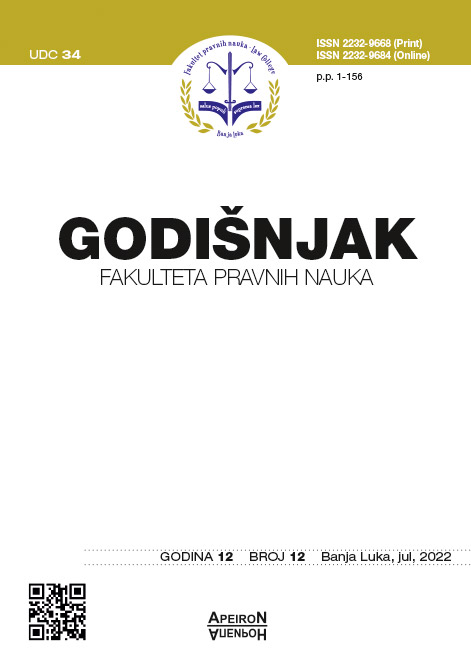Art of Interpretation of Norms in Contemporary Public International Law: Appraisal of Methods and Approaches
DOI:
https://doi.org/10.7251/GFP2212007GAbstract
The article explores contemporary issues in the interpretation of public international law rules: treaties, customary rules and other formal sources. As it is generally required in both legal practice and science, the practitioners of public international law also need to interpret international legal rules when trying to find its correct meaning and scope of application if there is the lack of clarity. The article has shown that there is a variety of methods that are applied by the subjects of interpretation with a view of determining the right and just meaning of the rules in question. During the last century, the art of interpretation has partially advanced as the Vienna Convention on the Law of Treaties has established the rules applicable to the interpretation of inter-State treaties. However, the customary rules or specific legal regimes still apply to interpreting other treaties and other formal sources of public international law, which do not fall within the scope of application of the Vienna Convention. Unlike municipal legal orders, there is no a centralised authority at the international plane which is authorised to interpret international law. Therefore, it is possible to speak about a multitude of subjects that interpret international law, whilst the most relevant seem to be authentic interpretation of the treaties or other acts. A particular layer in the interpretation of the rules of public international law is related to the need to ensure their effectiveness, thus enabling that the subject international relations be maintained or that the international structures keep performing their duties.
